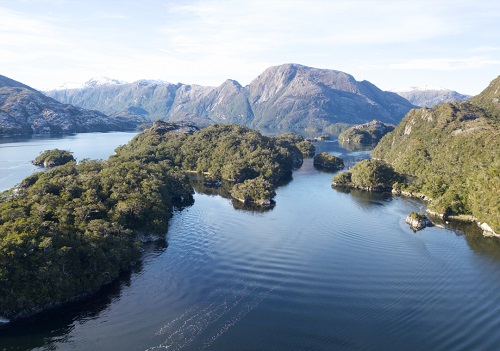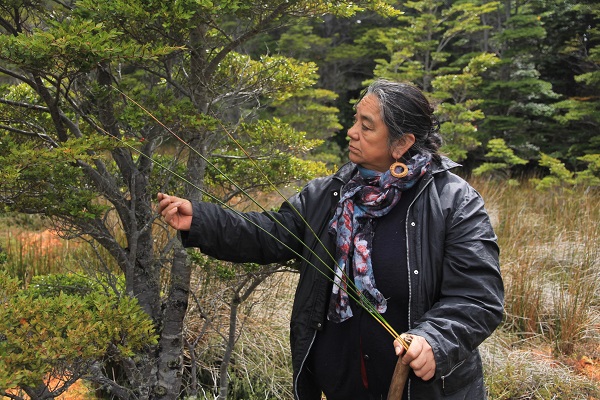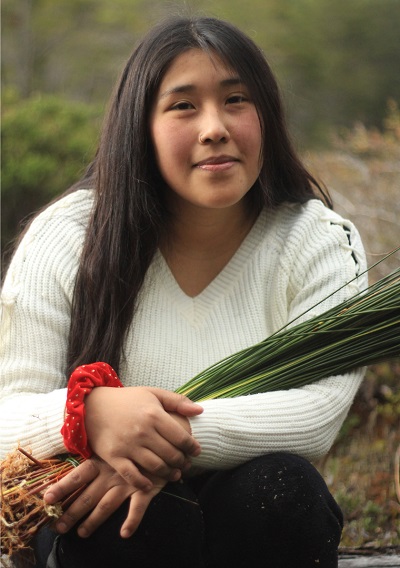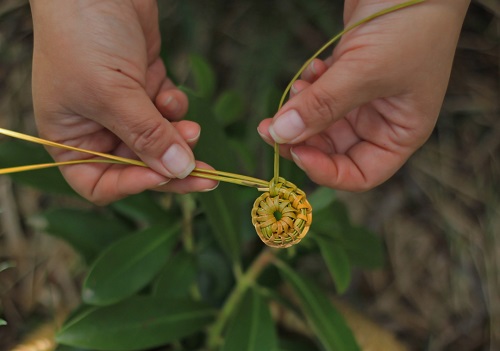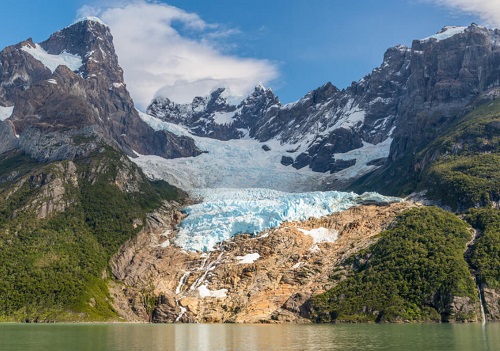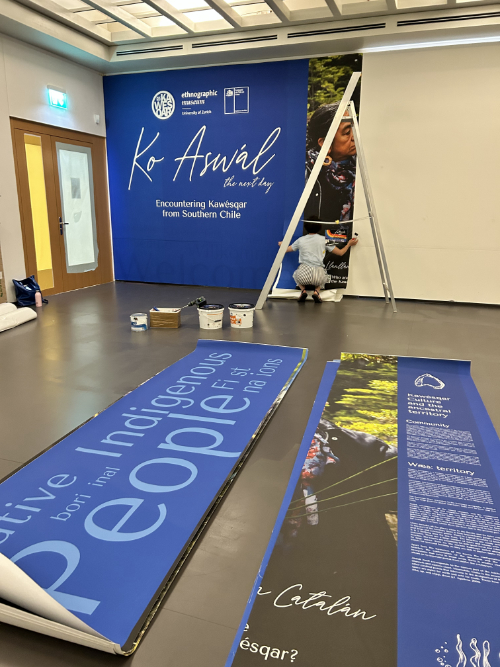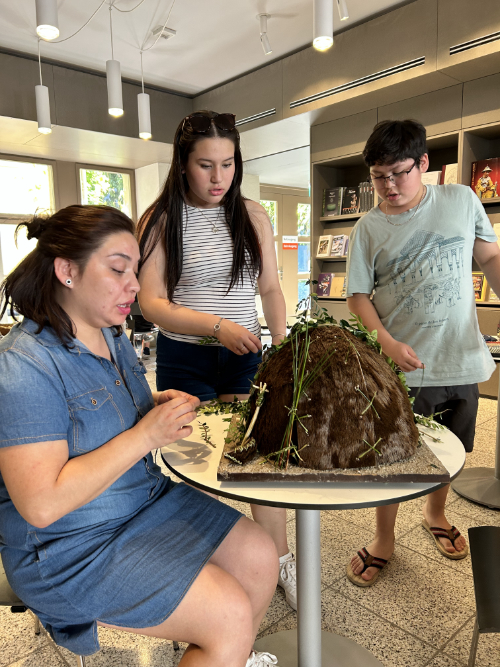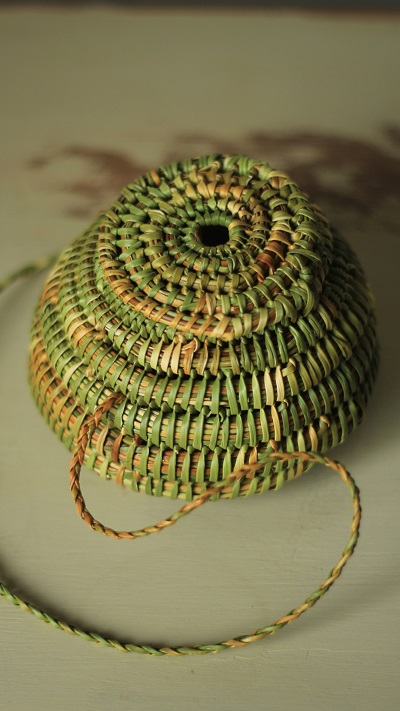Media Release and Material
Retelling history, and the living culture of Kawésqar from Southern Chile today
Zurich, 10 July 2023
For three weeks in summer, members of Kawésqar society will be hosted by the Ethnographic Museum at the University of Zurich. Kawésqar people are the indigenous inhabitants of the extreme south of Chile, also known as “canoe nomads”. For more than 6,000 years they have inhabited channels, fjords, and archipelagos in the southern part of the American continent. In 1881, eleven Kawésqar were involuntarily brought to Europe and put on display in an indiscernible, undignified manner. Their last stop was Zurich. Now, with their own exhibition, talks, workshops, sounds and films, Kawésqar bring their skills and culture to Zurich on their own conditions. They will re-relate their history and share their culture; they will welcome visitors, explain, and describe first-hand how they lived in ancient times, and how they live today.
An ancestral nomadic culture in cold waters
The Kawésqar have lived throughout Western Patagonia, an extreme territory made up of innumerable islands, channels, fjords, glaciers, mountains, rivers, and peat bogs. This beautiful, cold, and rainy place, that can only be traversed by sea, often has an adverse climate, with just two seasons: winter, with temperatures between 0 and -5°C, and summer, with highs of around 10°C. In this scenario, the Kawésqar were nomadic seafaring canoeists with a hunter-gatherer lifestyle.
Their principal vessel was the tree-bark canoe Kájef, which was made of overlapping pieces of bark meshed into a seashell shape and sewn together with whale nerve fibres. The canoes or Kájef were eight to nine meters long, and in the centre of the canoe a fire was always kept alight, normally consisting of slow-burning embers that produced heat for warmth and cooking. The canoe could hold a nuclear or extended family of up to ten people. The family travelled with their dogs, weapons, and tools.
The Kawésqar diet was based on sea lions and birds, which were hunted; and fish and shellfish, which were gathered. Shellfish were a staple food and were collected by women, who dove in search of them. In order to preserve their body heat when gathering the shellfish in handmade baskets, they covered their bodies in clay and sea lion fat.
The canoe nomadic lifestyle of the ancient Kawésqar remained as such for much longer than other similar cultures in the world, in part due to the late arrival of colonists from Switzerland, Spain, France, Germany, Portugal and other countries to these extreme lands, by the mid-19th century.
The journey of Kawésqar people
In 1881, 11 Kawésqar were involuntarily brought to Europe and put on display, to be gazed at in “human zoos” in different cities. Five Kawésqar of this group died during their stay in Zurich in 1882, and their human remains were retained in the Anthropological Museum at the University of Zurich. After 128 years, in 2010, their remains were repatriated from the University of Zurich to the Government of Chile.
Now, with the support of the Embassy of Chile in Switzerland, Kawésqar people have decided to take a new journey to Zurich, to find again the place that once witnessed the end of a sad and inhumane trip, to re-narrate their history, and provide it with a new significance. This time, the Kawésqar delegation will be welcomed by Mareile Flitsch and Maike Powroznik, director and curator of the Ethnographic Museum, and the museum team.
In this new journey the Kawésqar are the protagonists of their story, and will share with visitors their culture, their history and the skills that are materialized in the objects. They have important meaning and use in their traditional, and in some cases current life, such as baskets made by the artisans, harpoons, valuable stones, sea lion skin and oil, and rock tools, among other pieces. They will introduce to visitors not just objects, but also their cosmovision and understanding of life, offering immersive experiences in the Kawésqar territory through storytelling and talks on various topics of Kawésqar culture.
The museum and its visitors will have the unique opportunity to ask questions and obtain first-hand answers. How have Kawésqar people preserved their culture, despite the adversities? Did ancient Kawésqar interact with other indigenous groups in Patagonia? How did/do Kawésqar conceive of themselves and their interaction with the environment? What significance did/do they give to animals, earth, and water? Visitors may find answers to these questions while learning from the artisans how to craft baskets in the workshops that the delegation will offer.
Present life and Kawésqar engagement
Above all, Kawésqar want to shape their present – of course against the background of their history – and invite you to learn about their current commitments. In the last century they have undergone the utmost transformation, with the aim of incorporating themselves into Western Chilean society. This process of changing has caused a great loss of cultural, essential and differentiating elements from the nomadic life of these ancient hunter-gatherers. To preserve this culture, they were formally recognized by the Chilean State at the end of the 20th century as one of the 10 Indigenous Peoples within the Chilean national territory, whose cultural heritage and rights must be preserved and protected.
Their project “Ko Aswál – The Next Day” is a journey for everyone who wants to travel with the Kawésqar. Visitors and museum staff are invited to join a journey to the Chilean Patagonia, experiencing the self-history account and the essence of this fascinating culture with its transformative and innovative potential. This exhibition is also a tribute to memory and local knowledge, and at the same time an attempt to value the legacy of knowledge and experience of people who were thought to be on the path to disappearance. They are alive and want to tell the world who they are.
Ko Aswál – The Next Day
A cooperation project at the Ethnographic Museum at the University of Zurich
Pelikanstrasse 40, CH-8001 Zurich
18–30 July 2023 and 29 August–3 September 2023
Tue, Wed, Fri 10am–5pm, Thu 10am–7pm, Sat 2–5pm, Sun 11am–5pm
Contacts of cooperation partners
Pueblo Kawésqar Foundation
Francisco González, president
+41 44 634 90 10 (via museum)
francisco@pueblokawesqar.cl
www.pueblokawesqar.com/koaswal
Chilean Embassy in Switzerland
Natalia Nahmías Navarro, Consul of the Embassy of Chile
+41 31 370 00 53
nnahmiasn@minrel.gob.cl
Ethnographic Museum at the University of Zurich
Dr. Maike Powroznik, curator
+41 44 634 90 20
powroznik@vmz.uzh.ch
